Wind back the hands of time and you’ll discover the original Reactor hardtail that had a fantastically futuristic linkage-driven, coil-sprung, head tube-mounted coil shock which meant it was lusted after by many a bike geek back in the late 1990s.
Skip ahead a few years and, with Nukeproof’s rebirth, it hadn’t revived the Reactor name, instead filling the trail bike gap in its range with the Mega TR: a 130mm trail bike that was made from the same forge as its longer-travel Mega AM.

By 2016 the TR version of Nukeproof’s now venerable Mega was lost, leaving quite a hole in its full suspension bike range, not offering a true trail bike.
Fast forward to 2020 though and Nukeproof has been working hard behind the scenes to plug that gap with its new Reactor.
2020 Nukeproof Reactor frame details
Taking cues from the rest of Nukeproof’s full suspension range, the new Reactor is available with both 27.5in and 29in wheels and is made from either carbon fibre or aluminium, with the alloy model getting the same carbon fibre seatstays as its more expensive counterpart.
Nukeproof went to great lengths to explain why the 650b and 29in wheeled bikes are totally different with their wheel size-specific geometry.
Instead shoehorning big wheels on to a smaller-wheeled frame or fitting smaller hoops to a bike designed for big ones using flip chips, Nukeproof figured the best approach was to design each frame from the ground up.
The results are slightly differing geometry figures for the two bikes but with a silhouette that’s virtually identical.
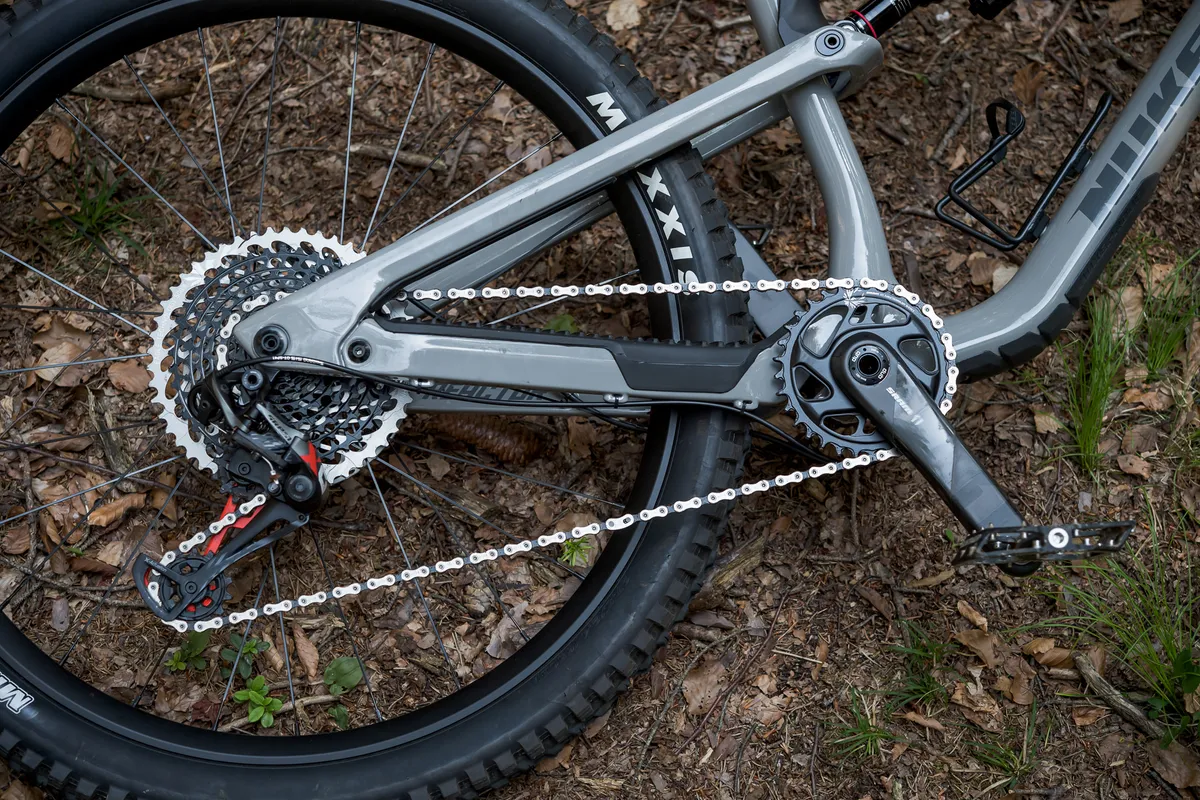
Nukeproof says that you should choose your wheel size depending on the type of riding you prefer and says that a 650b Reactor is going to be more playful than the 29er version and could be better suited to smaller riders who experience tyre buzz on big-wheeled bikes.
To that end, the 29er is only available in medium, large and extra-large sizes, while the 27.5in model goes from small up to extra-large. So, for the smaller riders out there, Nukeproof has already made your choice.
Each frame gets space for a full-size 750ml water bottle mounted to the top of the down tube, which is something the Mega doesn’t currently have and a feature riders have been screaming for recently.
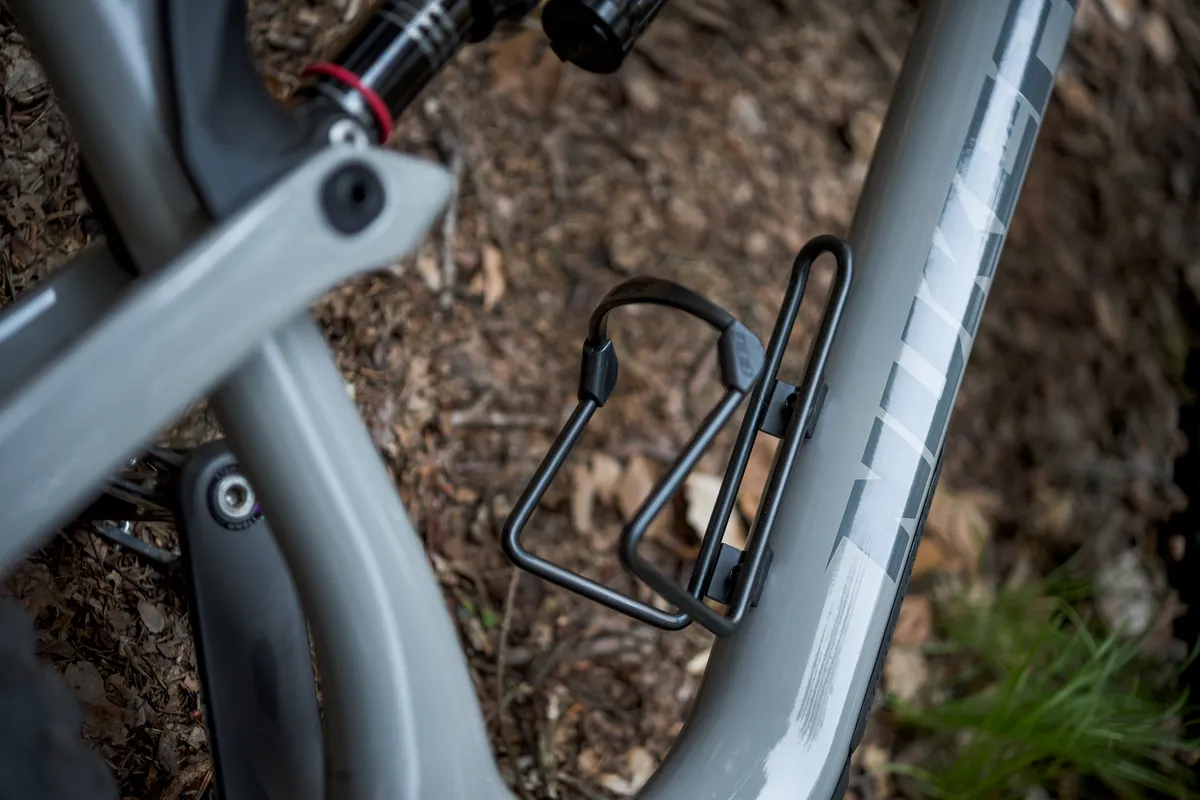
There’s a hefty rubber down-tube protector to limit damage from rock strikes and seat and chainstay protectors to help stop rattle and noise from chain slap.
The chainstay protector is ribbed which helps to further reduce noise.
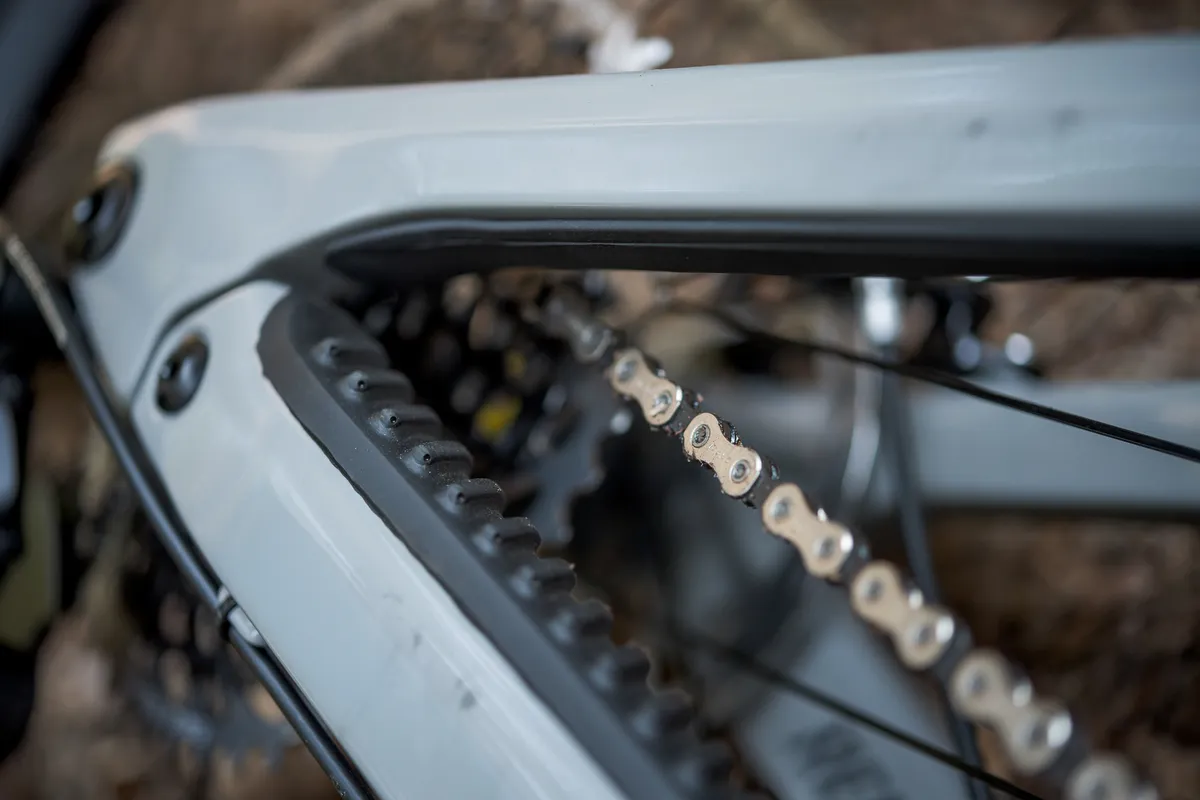
The bike’s got internally-routed cables that enter the down tube near the head tube, exiting just in front of the bottom bracket on the underside of the down tube. The cables then run externally, both along the underside of their respective chainstays.
There’s 148mm rear axle spacing and the bike’s got a threaded bottom bracket. You also get tyre clearance for up to 2.6in rubber on both the 27.5in and 29in wheeled variants.
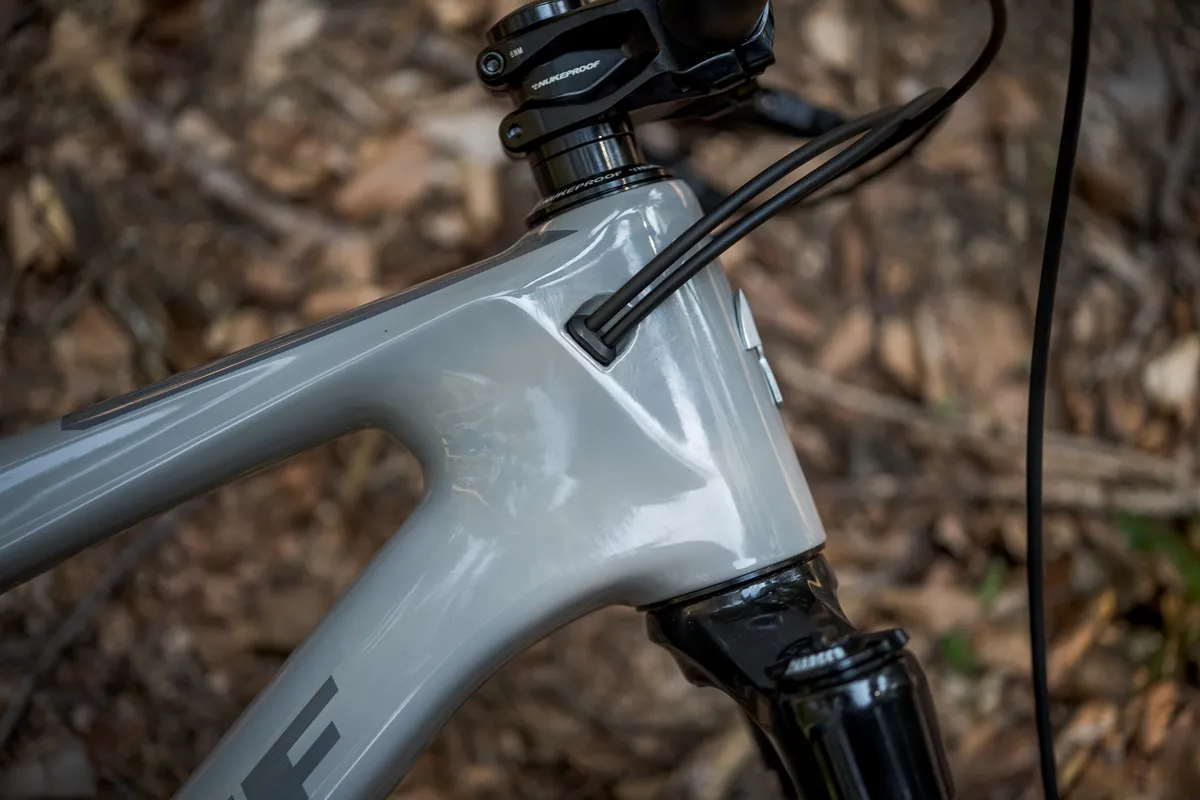
2020 Nukeproof Reactor 275 RS geometry
The carbon and alloy versions of both wheel sizes of the bike share their respective geometry, so swing a leg over a carbon 650b bike and it should feel the same as the alloy version. Likewise for the 29er.
The geometry is adjustable using a flip chip system that’s positioned on the seatstay/linkage pivot. This lets you change the bike’s geometry between two settings that are called trail and rail.
The trail setting gives you a steeper head angle, more bottom bracket clearance and a steeper seat tube angle, while rail slackens the bike out making it more suited to descending.
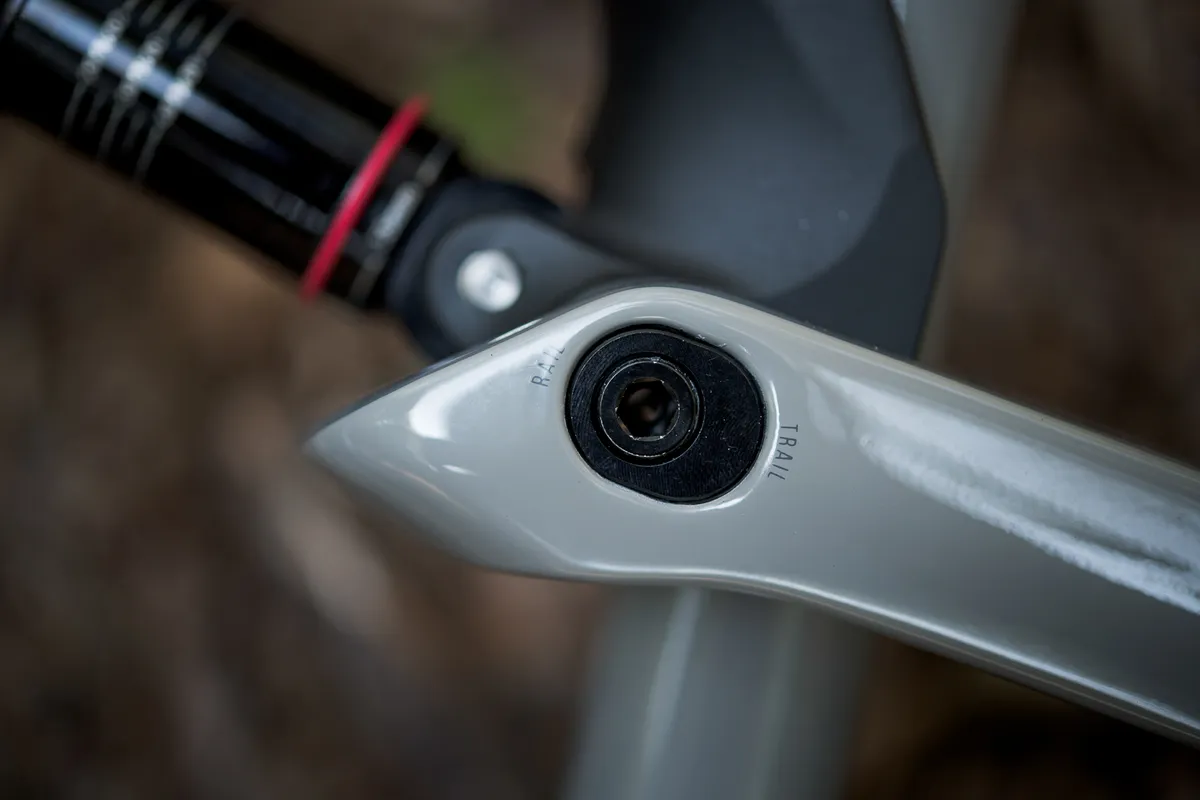
Thanks to a longer travel fork, the size large 275 RS in the low setting has slightly slacker geometry compared to the rest of the bikes in the range, including a whopping 478mm reach, a 1,216mm wheelbase, 430mm chainstays that are mated to a 65-degree head angle and a 74.6-degree seat tube angle.
Pretty good stuff considering the amount of rear wheel travel it has.
Key numbers for the size large 275 RS:
- Seat tube: 458mm
- Seat angle: 75.1/74.6 degrees
- Head angle: 65.5/65 degrees
- Top tube: 641.5mm
- Reach: 478mm
- Chainstay: 430mm
- Wheelbase: 1,216mm
- Bottom bracket height: 339/333mm
- Stack: 612.5mm
- Head tube length: 120mm
- Sizes: S, M, L, XL
- Notes: Geometry figures quoted for size large with high/low setting
2020 Nukeproof Reactor suspension
Nukeproof has also gone to great lengths to search out what it considers to be the perfect suspension kinematics. And, like on its new Dissent DH bike, has decided not to use its Fall Out linkage, instead opting for a Horst-link with a linkage-driven rear shock.

Although the suspension kinematics remain unchanged between wheel sizes and frame materials, there’s more travel on the 650b bike at 140mm compared to the 29er's 130mm of travel.
This, Nukeproof hopes, has allowed it to tune the bike’s suspension to have great levels of compliance at the start of its stroke while maintaining that all-important mid-stroke support for turns and compressions, and keeping anti-squat levels reasonably high to help reduce pedal bob.
The numbers support this theory. At around 30 per cent sag, the bike’s anti-squat figure in first gear is just over 93 per cent.
This means the suspension shouldn’t be actively extended when you pedal but neither should it dive and wallow around with each pedal stroke.
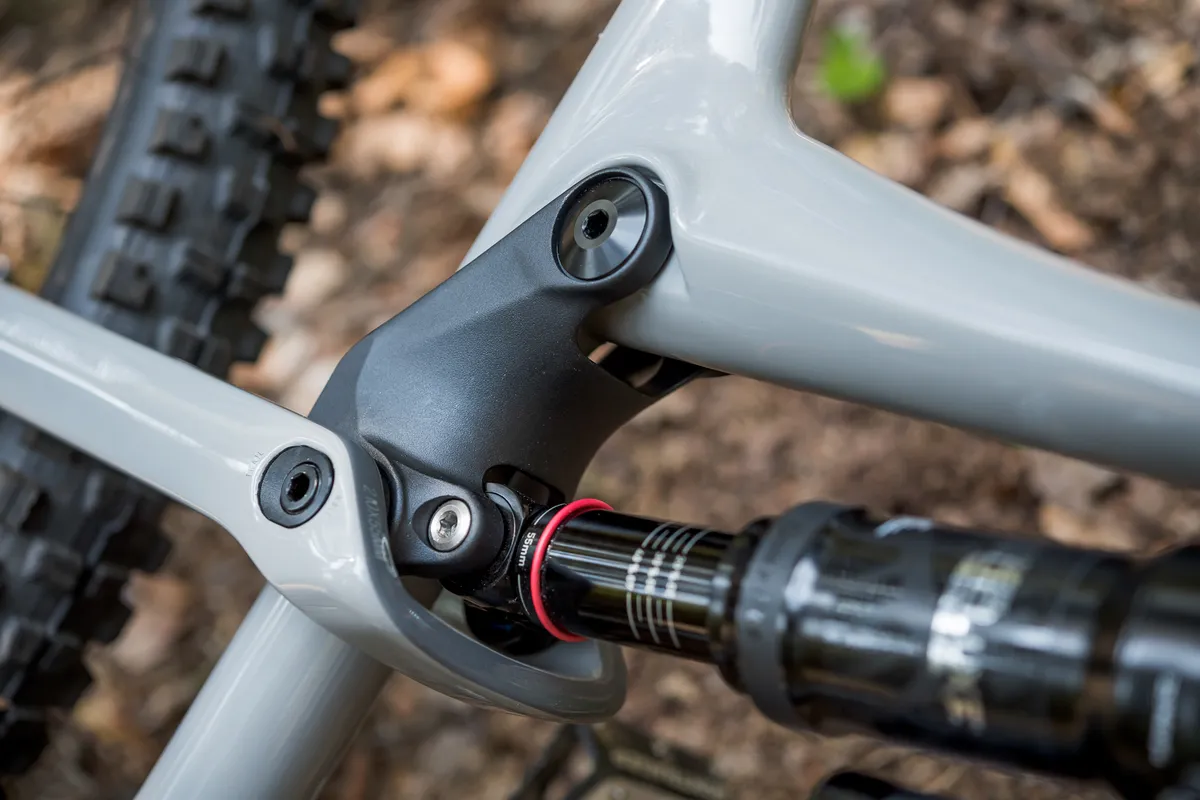
The bike’s initial stroke is slightly regressive for the first 30mm of travel. This means it gets easier to compress at the start of its travel which should mean that it’s particularly supple until you hit the sag point.
It then becomes progressive as it compresses through its travel all the way through to bottom out, hopefully better resisting harsh bottom outs and giving plenty of mid-stroke support.
Anti-rise — compressive forces acting on the suspension under braking that help to counter deceleration forces which cause the rider to move forwards, upsetting the bike’s geometry — sits at about 92 per cent at sag, dropping off to 32 per cent at bottom out.
This, Nukeproof claims, should allow some squat under braking while still pushing the rear tyre into the ground, thus helping with traction and keeping the suspension fairly active.
2020 Nukeproof Reactor 275 RS specification
As the top-end and burliest Reactor available, it’s not a surprise to see a list of hard-hitting components, even for a 140mm travel trail bike, considering Nukeproof’s gnarly, gravity-focused reputation.

Fitted with a 160mm travel Lyrik Ultimate fork that's mated to a RockShox Super Deluxe Ultimate rear shock, with rebound and low-speed compression adjustment and a climb lever, it’s clear to see the Reactor is no ordinary trail bike.
To accompany the gnarly, enduro-focussed Lyrik you get a set of Mavic Deemax DH wheels and the ultra-powerful Code RSC brakes with 200mm front and 180mm rear rotors.
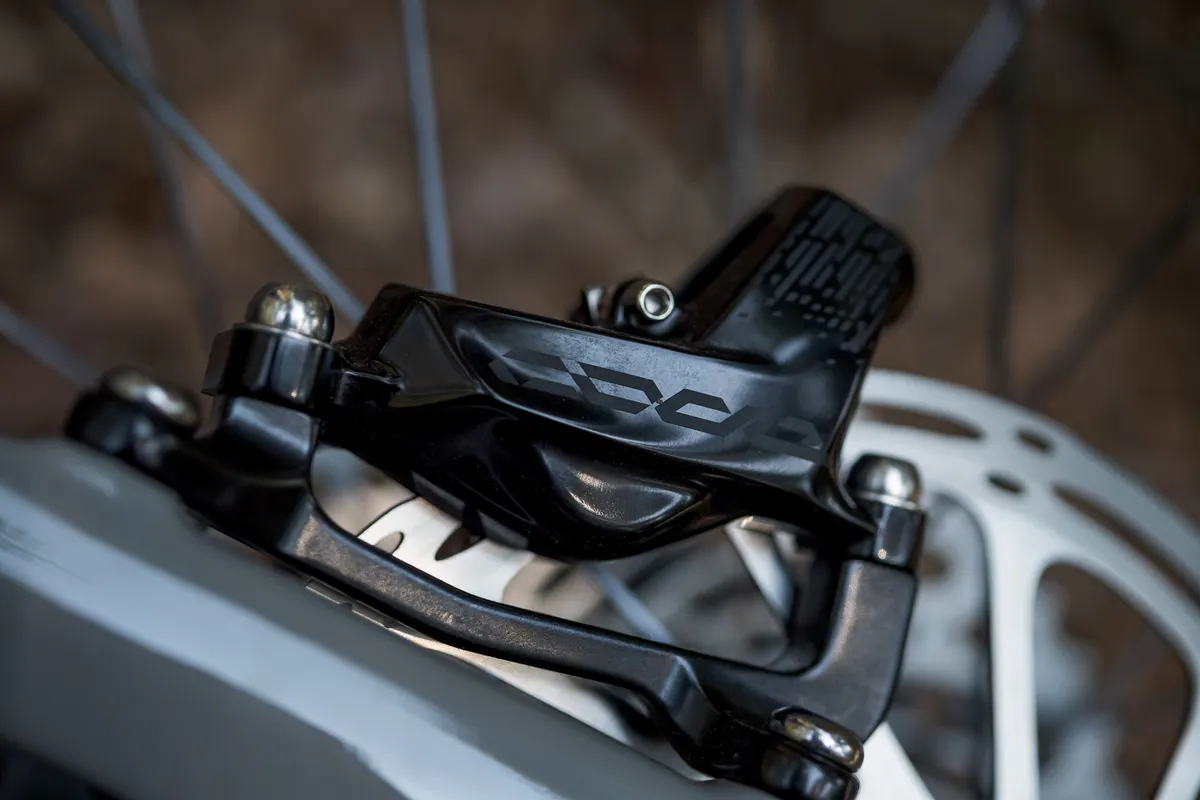
There’s a RockShox Reverb dropper post and a SRAM Eagle X01 12-speed groupset.
The Mavic wheels are wrapped in Maxxis Rubber — an Assegai up front and DHR II on the rear.
Both tyres have the Exo+ casing which tries to strike a balance between weight and strength.
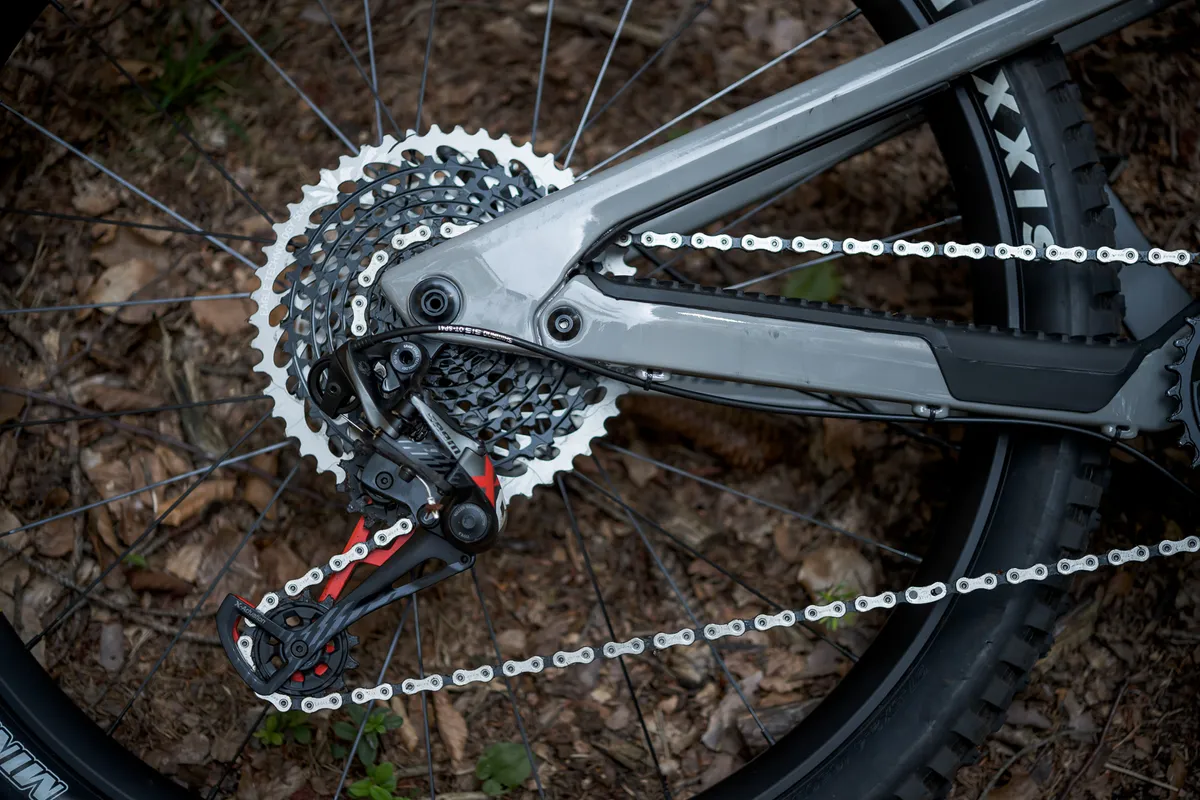
Nukeproof’s own Horizon carbon bar, alloy stem and saddle with Sam Hill signature grips round out the build.
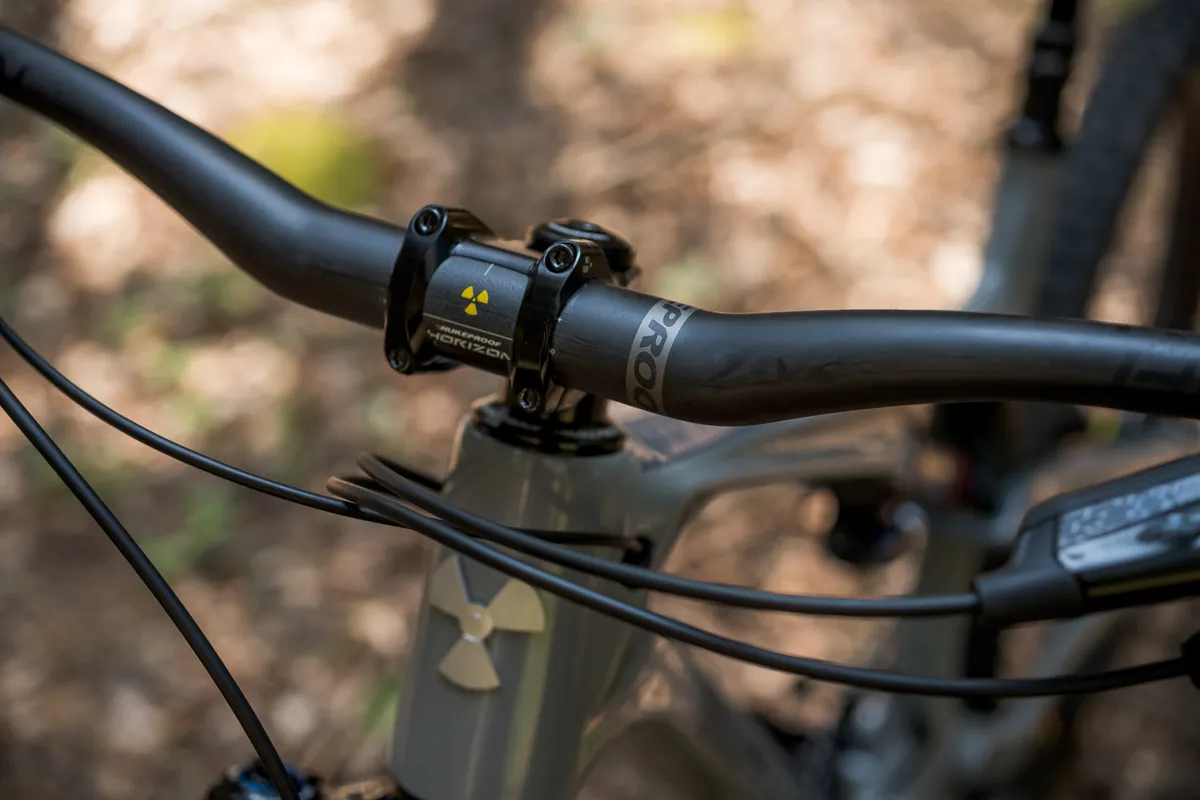
Other builds are available, which have a slightly less heavy-hitting list of parts, so if you’re more of a tame trail rider than an enduro shredder there should be a build kit suitable for your preferences.
2020 Nukeproof Reactor 275 RS ride impressions
Going off the Reactor 275 RS’s looks, it’s a logical step to assume that it would ride like a full-on enduro rig. And while that would be a fair assumption to make by just visually checking out the bike, it isn’t necessarily the most logical thing when you study the geometry, travel and intended use of the bike.
So, how does it ride then?

2020 Nukeproof Reactor 275 RS climbing performance
Heading uphill on the Reactor is a pretty uneventful affair, which is to say that it climbs somewhere between an all-out lightweight trail bike and a full-on enduro descender. Although that should come as no surprise considering the spec, travel and geometry.
You get bob on flatter, smoother ground where high cadence pedalling is possible, which is entirely counteracted by the use of the shock’s lockout lever.
And, like many lockout functions, the use of the lever on rougher trails does reduce grip and comfort, negating the positives of the additional support provided.
Although, on very steep climbs, the lever does help to keep the rear-end propped up as your weight shifts rewards.

The bob is a characteristic provided by the bike’s suspension kinematic — anti-squat is below 100 per cent even in the lowest gear and reduces to 66 per cent for the highest.
The bike’s geometry provides a comfortable platform to pedal on and it’s entirely possible to cover plenty of miles with climbs and undulations on the bike with total ease.
The top tube is long enough so you don’t feel cramped but isn’t so long that the front-end wanders or is uncontrollable on steeper climbs.
The 74.6-degree seat angle isn’t the steepest out there and I did find myself having to angle the seat nose-down and push it as far forwards in the seatpost clamp as possible to help keep my weight over the cranks when pedalling seated.
This problem is universally-shared with a lot of bikes at the moment and, in the future, I believe we will see a dramatic increase in seat tube angles.

It isn’t a deal-breaker though, and I did choose to run the bike in the rail setting (the lower of the two) all of the time.
Putting it in the high setting would increase the seat tube angle by 0.5 degrees and I found that the trail setting detrimentally changed the way the bike rode on the descents.
It felt like the tail position not only raised the bottom bracket but also gave the impression of the bars being lowered. This is because your feet have moved up in relation to where your hands are, which forced me to ride in a more reward position to counteract the bike’s now perceived lower front end.
This made climbing easier, and for an out-right trail or heavy XC rider the trail setting would be fine, but the rail position is the noticeably better setting, making fewer compromises on both the descents and climbs.

At this point it’s worth addressing the burly spec.
The weight penalty of a Lyrik over a Pike or Revelation isn’t particularly significant and the disadvantages of carrying an additional bit of lard are significantly outweighed on the descents, but neither are they a big enough negative to warrant any fuss.
In fact, when climbing, the weight of the Lyrik, Deemax wheels and Code brakes didn't feel like they held me back and the bike felt relatively spritely a vast majority of the time.
Maybe if you’re chasing precious seconds on a hill-climb KOM attempt then you’ll curse the burlier spec, but I don’t think this bike is aimed at that sort of riding anyway.
2020 Nukeproof Reactor 275 RS descending performance

When descending, the bike doesn’t suddenly come alive like full-fat enduro bikes do. The rear suspension feels good but doesn’t have a noticeably plush beginning stroke. It does absorb bumps well, but isn’t hyperactively tracking the terrain.
Whether this is down to the bike’s bias to give really impressive mid- and end-stroke support or if it’s something to do with the shock’s tune remains to be seen, but it’s likely to be a combination of both.
The bike is very sensitive to sag settings too and, with only 140mm of travel on tap, sitting too deep into the travel equals bottom outs that happen all-too-easily.
Likewise, with not enough sag the already limited small bump compliance is further reduced.
That said, I’d rather trade small bump compliance with mid- and end-stroke support any day of the week, and the Reactor has this in abundance.
It makes it possible to push through turns, hammer compressions and send it without worrying about the landing, and the bike really comes into its own when you’re riding with a playful but purposeful style.
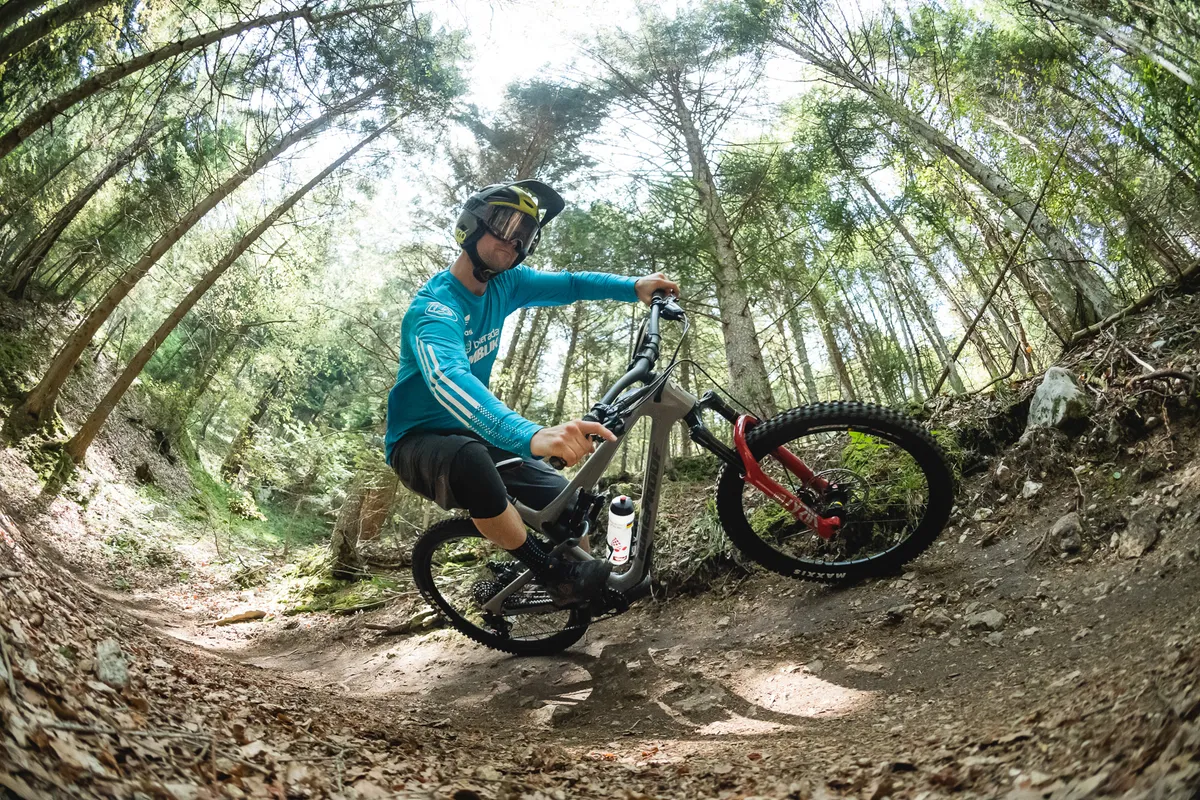
In fact, it’s a very playful bike that loves to be flicked about and ridden expressively. This is almost certainly a combination of many factors — the big travel fork, short chainstays and a long reach — which culminate in an action-packed ride that’s surprisingly suited to flowy trails at the bike park as much as it is in deep in the woods on some natural singletrack.
Start dropping the hammer, though, and this same playful geometry does make the bike feel a tad skittish and out of its depth.
The big, burly spec can lull you into a false sense of security, quickly forgetting just how much travel the rear end of the bike has and that it is a trail bike.
I’d happily wager that with a coil shock or higher-performing air shock you’d be able to eke out a bit of extra oomph from the bike’s back end.

I had no complaints about the bike’s spec over the duration of the test period. The Code RSC brakes are always top performers, as is the RockShox Lyrik.
Likewise, the SRAM drivetrain and Reverb dropper are virtually faultless.
The Nukeproof finishing kit works well too, but I’m not keen on the Sam Hill lock-on grips with two locking collars. They feel too stiff and can cause discomfort compared to softer grips with only one or no locking collar.
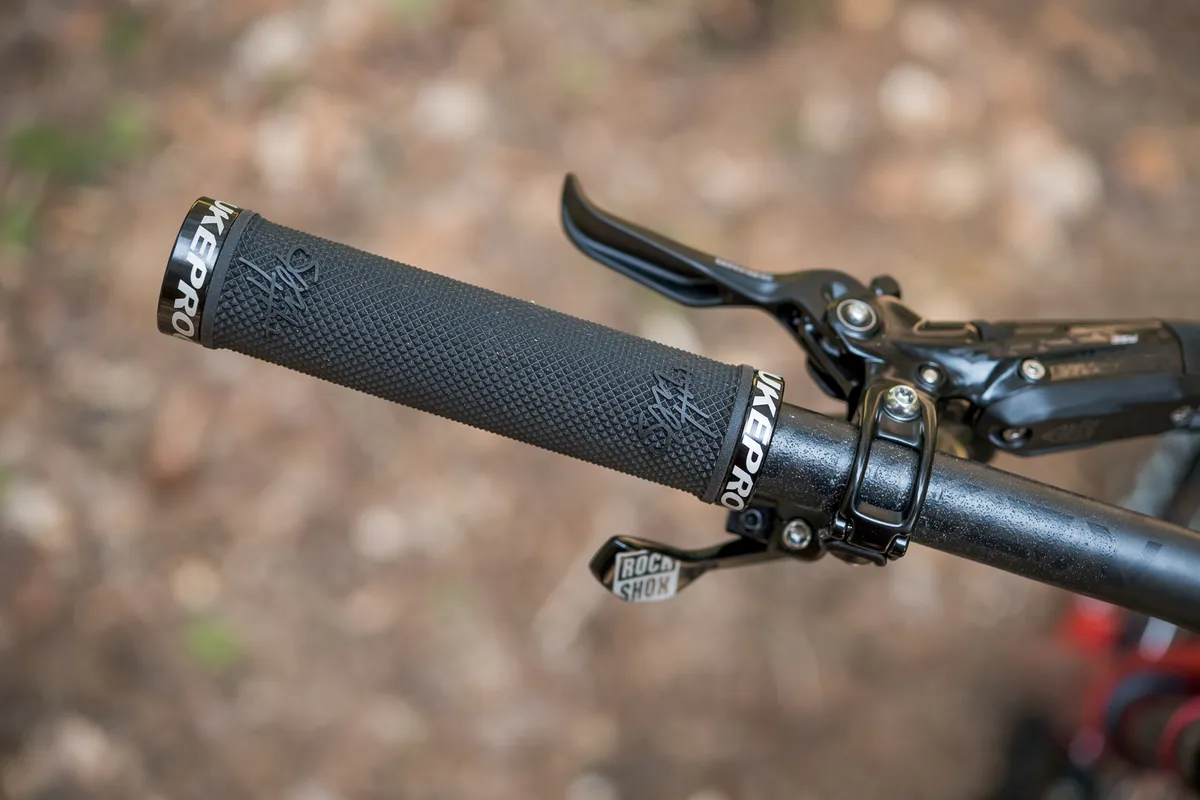
The Mavic Deemax DH wheels left me scratching my head a bit. While the rear wheel felt quite harsh on some bumps, it isn’t built too tightly and it was possible to get the spokes to twang in turns, even when I wasn't pushing too hard as they flexed and contacted one another.
Nukeproof has said that it's investigating this issue with Mavic and its suspicions are that the wheels haven't been built correctly, so expect this issue to be rectified by the time the bikes are available to buy.

However, the wheels have stayed true and even after flatting the rear Exo+ casing rear tyre and riding to the bottom of a particularly long and rocky trail there were limited marks and no significant dings on the rim’s sidewalls.
Nukeproof has also managed to nail the frame’s construction, and I wasn’t left begging for a more forgiving or stiffer ride.
The pretty neutral chassis means that you can tune the bike’s ride to your own tastes with choice spec changes: Want it to be stiffer? Add sturdier wheels? What about more compliant? Maybe look at a less-burly fork?
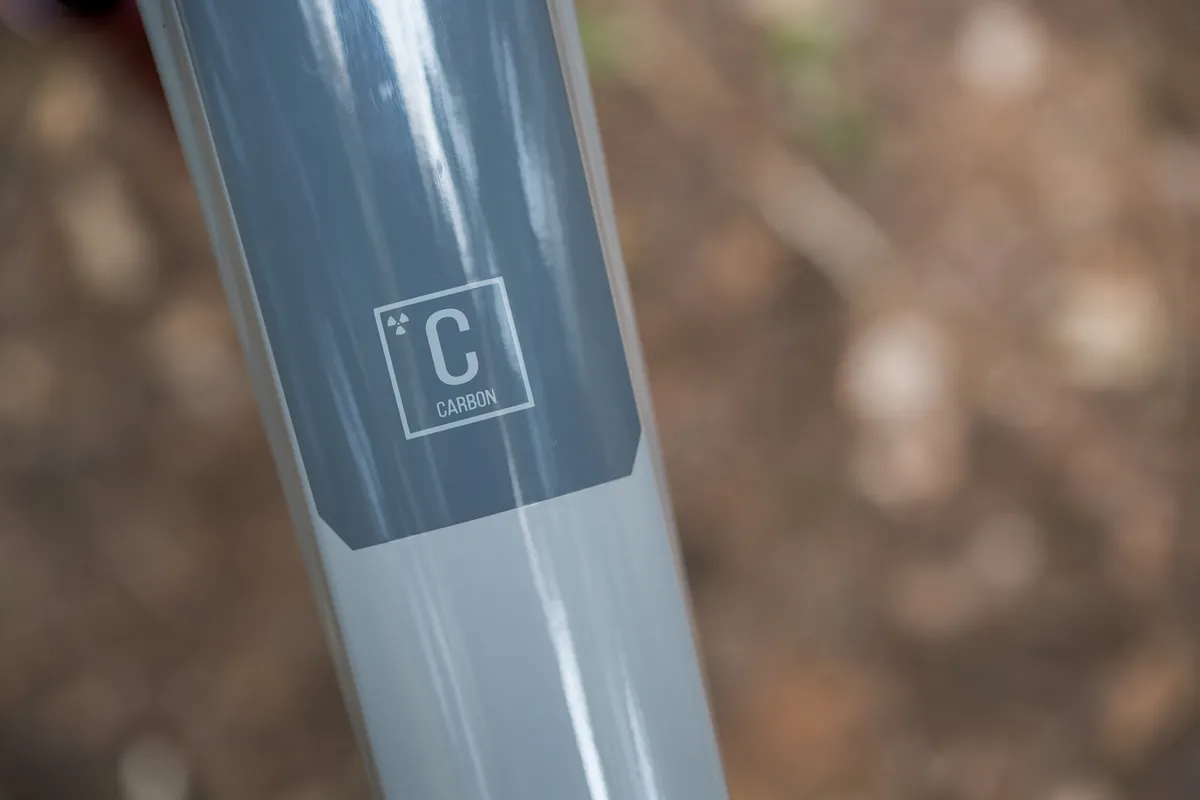
The internally-routed cables did rattle quite a bit inside the down tube over rougher terrain whether that was uphill, flat or downhill. Pulling on them didn’t cure the issue and if you like a quiet bike you might want to consider a way to remedy this.
2020 Nukeproof Reactor 275 RS bottom line
At £5,399.99 / €5,399.99 / $5,399.99 / AU$8,399.99 the Reactor represents a significant investment, but it appears like it’s as close to a one bike quiver you can get by only making small but not devastating compromises to help it appeal to as many people as possible.
The ride is top-notch, especially if you’re a playful rider that only has the space for one bike, and it’ll truly do everything you ask of it – and in RS guise, the Reactor is impressively capable.
And while the price for the top-spec model seems fair, it’s still a reasonable chunk of cash.
I think it’s right to say that Nukeproof's move to slowly, but rather surely, include higher-priced, higher specced bikes in its range is a direct result of having a significant number of loyal customers but also wanting to tempt in new ones with a range of top-level bikes that would have previously purchased elsewhere.
The Reactor Comp is the cheapest model in the range and costs £2,749.99, also proving that Nukeproof isn't moving away from offering bang for buck either.
Product
| Brand | Nukeproof |
| Price | A$8399.99, €5399.99, £5399.99, $5399.99 |
| Weight | 14.30kg |
Features
| Fork | RockShox Lyrik Ultimate Charger 2 RCT3 |
| Stem | Nukeproof Horizon |
| Chain | SRAM 12-speed |
| Frame | Nukeproof Reactor |
| Tyres | Maxxis Assegai 27.5X2.5 WT EXO+ 3C Maxxterra TR f, Maxxis Minion DHRII 27.5X2.4 WT EXO+ 3C Maxxterra TR |
| Brakes | SRAM Code RSC |
| Cranks | SRAM X1 carbon DUB |
| Saddle | Nuleproof Horizon SL |
| Wheels | Mavic Deemax DH |
| Headset | Nukeproof |
| Shifter | SRAM X01 12-speed |
| Cassette | SRAM X01 Eagle 12-speed |
| Seatpost | RockShox Reverb Stealth |
| Grips/tape | Nukeproof Sam Hill signature |
| Handlebar | Nukeproof Horizon |
| Rear shock | RockShox Super Deluxe Ultimate RCT |
| Bottom bracket | SRAM DUB |
| Available sizes | Small, medium, large, extra-large |
| Rear derailleur | SRAM X01 12-speed |
